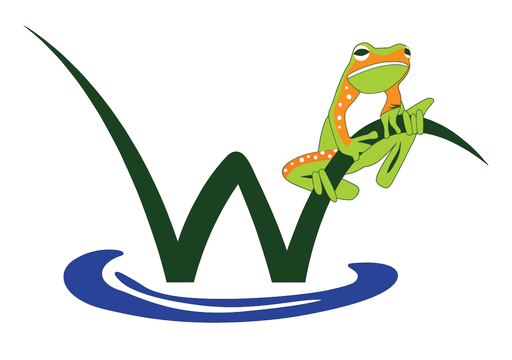It is easy to be moved by the earthy and bountiful beauty of our wetlands. Carried within the constant rush is the spur of everyday life in the wetlands. From the smallest creatures to the most complex ones, all life is interwoven and interconnected. And delicate, diverse bionetworks bustle with unseen activity.
Weeds are slowly changing all we love about our wetlands. They overwhelm the ecosystems, choking and outcompeting native flora. They crowd and degrade the habitats. They spread aggressively, establish themselves stubbornly and are extremely hard to dislodge. They hamper the myriad ecosystem functions.
In Australia, over 4 billion dollars are spent annually towards managing weeds. Costs compound when you consider the impacts from loss of biodiversity and environmental services.
Our battle against weeds is ongoing and persistent. And winning it will take a precise combination of science, engineering, ingenuity and committed on-ground support!
What are “Environmental” Weeds?
Environmental Weeds are unwanted invasive plants that establish themselves in natural ecosystems and permanently alter the natural processes of those ecosystems (as opposed to Agricultural/ Pastoral Weeds that thrive in agricultural and pastoral lands).
Here are a few weed facts.
- Over two-thirds of the weeds now established in Australia originated from gardens and ponds.
- About 10% of Western Australia’s flowering plants are introduced weeds.
- Of the 1233 identified weed species in WA, around 800 are found in Swan Coastal Plain bioregion.
How Do Weeds Invade the Wetlands?
Weeds showcase resilience and they flourish in the nutrient-rich wetland environment. So much so, that weeds have established themselves in every wetland in Western Australia.
Weeds are disturbance opportunists – plants that respond positively and rapidly to changes in soil, salinity, dampness, pH and native plant distributions. So, the disturbed edges of our urban wetlands are most at risk – where roads, verges, tracks, paddocks and housing settlements, are located close to the wetlands. In these disturbed areas, conditions quickly become favourable for weed growth.
A host of activities that we humans undertake can also boost the spread of weeds in the wetlands. Urban run-off and leaching, dumping garden and pond waste, prunings and clippings, fire events such as burn-offs and arson, and overusing groundwater from bores and wells, can all have serious impacts.
What Effects Do Weeds Have on Wetlands?
The wetland vegetation is specialized and contributes to processes within the wetland ecosystems. And these ecosystems are delicate, often relying on natural conditions of light, salinity and dampness.
When weeds encroach our wetlands, they affect the distribution of wetland vegetation. This, in turn, has a detrimental effect on the plants and animals that depend on native vegetation for survival.
Weed Impact at a Glance
- Loss of biodiversity and simplification of wetland plant community.
- Impacted and altered ecosystem functions.
- Altered nutrient recycling.
- Loss of habitat and food source for wetland fauna.
- Increased risk of erosion.
- Increased fire risk, as weeds add to the fuel load.
- Altered soil quality.
- Loss of water quality.
- Loss of aesthetic value.
- Increased management costs.
Ways to Fight Weeds
Compared to disturbed areas, densely vegetated areas are far more resilient to weed attack. Here circumstances do not permit weeds from taking a foothold or competing successfully for nutrients, sunlight and moisture. Thus, rehabilitating the wetland vegetation is a crucial first step towards weed control.
Restoring dryland vegetation and establishing shelterbelts around the wetlands is important too. They act as a line of defence and barrier from weed invasion.
Prevention is key. Prevent garden prunings and clippings from entering the wetlands. Similarly, prevent aquatic plants from ponds and aquariums from entering the wetland catchments. Prevent pet animals entering the wetlands, where they may graze on native plants. Pet faeces have been known to carry and spread weeds.
And finally, participate in wetland rehabilitation and conservation activities. These include weed removal, as well as planting activities, to re-establish native plants.
Join Our Forces!
At ‘The Wetlands Centre Cockburn’, here in the heart of the breathtaking Beeliar Regional Park, we are working towards building healthier wetlands for everyone.
We are involved in landcare, conservation and rehabilitation work. We run some exciting educational programs. We are community driven, we have a fantastic community outreach. And, we are pioneers in wetland management.
Get some action when you join us on Thursdays and Fridays. We start early, at 9am, and you can work for as long as you want until the close of day at 4pm. We have an array of weed control measures that we undertake. Or, you could participate in the nursery, where we nurture native flora.
Talk to us today and join our forces. Together let us win this fight!


Hi. I teach at Leeming SHS Education Support Center. I\’m on our schools Bush Ranger committee and wondered if you would be interested in esc classes volunteering to support with the weeding.
Hi Lorraine,
Apologies for the really late response. We\’d love for you to get involved in our landcare projects. Please do get in touch with Denise Crosbie, the Wetlands Officer at TWCC on her mobile at 0412081540, so we can take this further.
Thanks,
Admin.